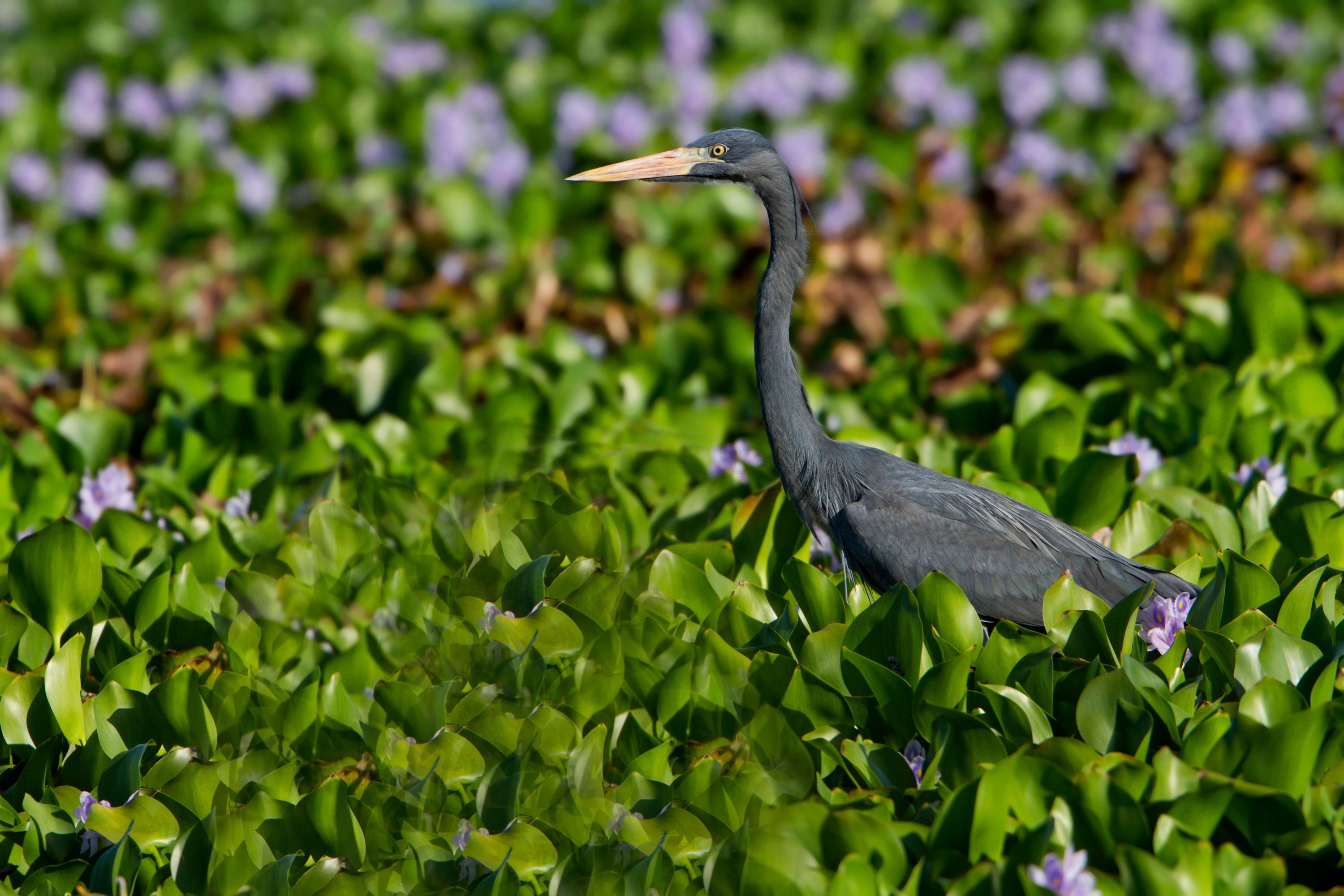
Humblot's Heron: The Endangered Giant of Madagascar
Introduction to Humblot's Heron
The Humblot's Heron, Ardea humbloti, is a rare and imposing bird species belonging to the heron family, Ardeidae. Named after the French naturalist Léon Humblot who first described it, this heron is endemic to Madagascar, making it a species of great ecological and conservation significance.
Physical Description
This heron stands out for its large size, reaching up to 120 cm in height. It has a predominantly gray plumage, with a paler head and neck, and subtle white streaking. The bird's long legs and neck, coupled with its sturdy bill, give it a regal and formidable appearance.
Habitat and Distribution
Humblot's Heron is confined to the island of Madagascar, where it inhabits freshwater lakes, marshes, and rivers. It prefers areas with shallow water and abundant fish, which provide ideal foraging conditions. The bird's habitat is largely influenced by the availability of these water bodies and their fish populations.
Behavior and Lifestyle
This heron is known for its solitary nature, often seen alone or in small groups. It is most active during the day, hunting and patrolling its territory. Despite its size, Humblot's Heron is a skilled and patient hunter, capable of standing motionless for long periods before striking its prey.
Feeding Habits
The diet of Humblot's Heron primarily consists of fish, which it catches with precision using its long, sharp bill. It also feeds on amphibians, small reptiles, and aquatic insects, adapting its diet to the availability of prey in its environment.
Breeding and Nesting Habits
Humblot's Heron breeds in colonies, often alongside other heron species. It builds large nests in trees near water bodies. These nests are constructed from sticks and reeds and are reused and expanded upon each breeding season.
Egg Laying and Incubation
The female lays 2 to 4 pale blue eggs. Both parents share in the incubation duties, which last about 25 to 30 days. The eggs' pale color helps them blend into the nest, providing camouflage from predators.
Chick Rearing and Parental Care
The chicks are born altricial and require significant parental care. They are fed regurgitated fish by both parents and grow rapidly, gaining the skills necessary for survival in the wild.
Vocalizations and Communication
Humblot's Heron is relatively quiet, but during the breeding season, it engages in a range of vocalizations, including deep croaks and calls, to communicate with mates and warn off intruders.
Conservation Status
Classified as Endangered by the IUCN, Humblot's Heron faces significant threats from habitat loss and degradation, primarily due to wetland drainage and pollution. Conservation efforts are focused on habitat protection and ecological research to understand better the needs of this unique species.
Similar Species and Taxonomy
Part of the order Pelecaniformes, Humblot's Heron is closely related to other large herons in the Ardea genus, such as the Grey Heron and the Great Blue Heron. However, it is distinguished by its unique size, habitat, and the distinct ecological niche it occupies in Madagascar.
Humblot's Heron in Utah
Humblot's Heron is not found in Utah or anywhere outside Madagascar. Birdwatchers in Utah can observe other heron species, such as the Great Blue Heron, in local wetlands and along waterways.
Conclusion
Humblot's Heron, Ardea humbloti, represents the unique avian biodiversity of Madagascar. Its status as an endangered species underscores the urgent need for conservation efforts to preserve the island's unique habitats. Protecting the Humblot's Heron goes hand in hand with safeguarding the ecological integrity of Madagascar's wetlands, essential for the survival of this and many other species.